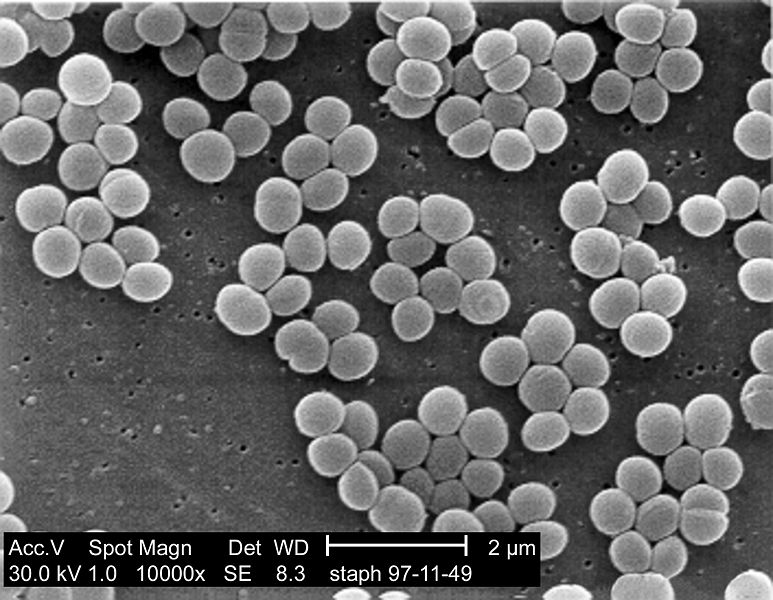Staphylococcal infection
| Staphylococcal infection | |
 | |
|---|---|
| SEM micrograph of S. aureus colonies; note the grape-like clustering common to Staphylococcus species. | |
| MeSH | D013203 |
Editor-In-Chief: C. Michael Gibson, M.S., M.D. [1]
Staphylococcus can cause a wide variety of staphylococcal infections in humans and other animals through either toxin production or invasion. Staphylococcal toxins are a common cause of food poisoning, as it can grow in improperly-stored food. One pathogenic species is Staphylococcus aureus, which can infect wounds. These bacteria can survive on dry surfaces, increasing the chance of transmission. S. aureus is also implicated in toxic shock syndrome; during the 1980s some tampons allowed the rapid growth of S. aureus, which released toxins that were absorbed into the bloodstream. Any S. aureus infection can cause the staphylococcal scalded skin syndrome, a cutaneous reaction to exotoxin absorbed into the bloodstream. It can also cause a type of septicaemia called pyaemia. The infection can be life-threatening. Problematically, Methicillin-resistant Staphylococcus aureus (MRSA) has become a major cause of hospital-acquired infections, and is being recognized with increasing frequency in community-acquired infections.
- The coagulase-positive Staphylococcus that inhabits and sometimes infects the skin of domestic dogs and cats is Staphylococcus pseudintermedius. This organism, too, can carry the genetic material that imparts multiple bacterial resistance. It is rarely implicated in infections in humans, as a zoonosis.
- S. epidermidis, a coagulase-negative staphylococcus species, is a commensal of the skin, but can cause severe infections in immune-suppressed patients and those with central venous catheters.
- S. saprophyticus, another coagulase-negative species that is part of the normal vaginal flora, is predominantly implicated in genitourinary tract infections in sexually-active young women.
- In recent years, several other Staphylococcus species have been implicated in human infections, notably S. lugdunensis, S. schleiferi, and S. caprae.
- S. aureus is also one of the most common causes of closed-space infections of the fingertips, known as paronychia.